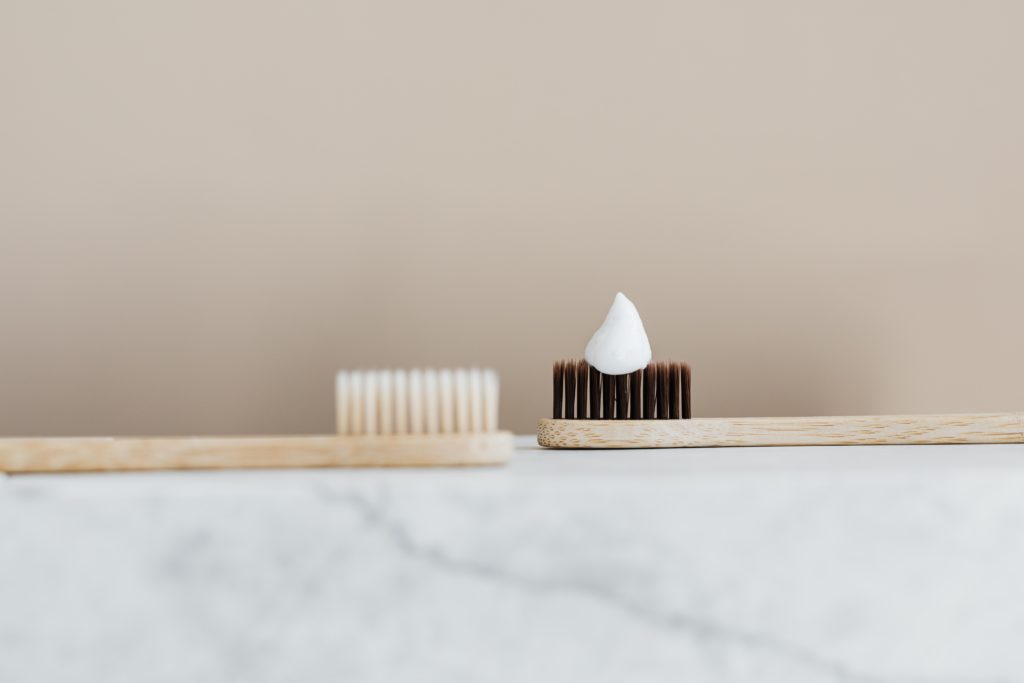Is Fluoride Toothpaste Bad For You?
Regular brushing and flossing are only a portion of maintaining good oral hygiene. An essential component of proper oral hygiene is using good-quality fluoride toothpaste. Fluoride is a mineral that occurs naturally in rocks and soil and is found in many kinds of toothpaste. Fluoride is a fantastic ingredient that aids in preventing cavities. We’ve heard many people asking if fluoride toothpaste is bad for you, and in this article, we’re breaking it down and giving you the answers you’re looking for.

What is Fluoride?
The majority of water sources, including lakes, rivers, and the ocean, contain fluoride – a naturally occurring mineral. Fluoride has been added to the majority of public water systems in the US for the past 75 years. By bolstering the tooth’s enamel, it aids in the prevention of cavities – this is why it is added to dental products.
Fluoridation of public water systems has been demonstrated to prevent dental decay in both children and adults by at least 25%, according to CDC studies.
According to experts, some customers’ misconceptions regarding the safety of fluoride may contribute to their choice of fluoride-free goods.
What To Look For in a Toothpaste
Dentists have a straightforward tip to give when it comes to selecting the appropriate toothpaste. Try to find a toothpaste that has been approved by the American Dental Association (ADA). In the United States, the American Dental Association (ADA) gives its Seal of Acceptance only to those toothpastes that have been shown to be both safe and effective at preventing cavities and maintaining excellent oral health.
Only toothpaste that includes fluoride will be allowed to have such a label, and only after giving scientific data confirming the product’s safety and effectiveness. Cavities cannot be prevented by brushing your teeth with a toothpaste that does not have fluoride in its formula.
Toothpaste Ingredients
Calcium compounds and phosphates
These serve as abrasives. These gently and effectively remove debris from teeth without damaging the enamel.
Adhesives
Examples of these include sodium alginate or xanthan gum. They help to keep the toothpaste from drying out and give it its flexibility and shape.
Humidifiers
Glycerol or propylene glycol keep the toothpaste from drying out by absorbing excess moisture.
Foaming agents
Sodium lauryl sulfate and sodium alkylsulfo succinate are two examples of foaming agents.
Preservatives
Microorganism growth can be inhibited with the help of preservatives. This is to make sure your toothpaste doesn’t go bad.
When Do Cavities Occur?
Cavities, also known as tooth decay, are caused when the tooth’s protective enamel is worn away. Plaque, often known as tartar, is a coating of bacteria that is constantly seen covering the teeth. When a person consumes meals or beverages that contain sugar, the bacteria in plaque make acid. This acid then destroys the hard outer coating of the tooth, eroding it over time. When a person consumes foods or drinks that contain sugar, the bacteria in plaque create acid. The tooth will then develop what are known as cavities, which are little holes.
Benefits of Fluoride
Guard your teeth against the onset of decay.
Fluoride helps prevent tooth decay by contributing to the strengthening of growing enamel and by reducing the creation of acid by bacteria that are found in plaque.
Guard your teeth against the effects of erosion.
The fluoride acts as a barrier between the teeth and a process known as demineralization. This takes place when bacteria interact with sweets to produce acid that erodes the tooth’s enamel.
In addition to this, fluoride is an effective remineralization agent. Because of this process, calcium and phosphate ions are brought to the tooth, which helps to develop a new surface area that is resistant to acid.
Potential Fluoride Risks
Too much fluoride can lead to dental fluorosis. Fluorosis is a disorder that causes a change in the color of dental enamel and can be caused by exposure to fluoride. This discoloration often presents itself as white spots on your teeth, however, it can also emerge as brown patches. The possibility of obtaining too much fluoride from toothpaste is rather low, and it largely affects youngsters since they are more prone to swallow toothpaste than adults are.
How to Prevent Dental fluorosis in Children
Children under the age of six should be closely supervised to prevent ingesting toothpaste.
Children under the age of two should only have a pea-sized amount of fluoride toothpaste applied to their teeth, and parents should consult a medical professional or dentist before using fluoride toothpaste on their children.
Is Fluoride Safe?
Though fluoride from toothpaste is widely accepted to be safe, there is a bigger, continuing controversy about total fluoride exposure from water, food, mouthwashes, and other sources.
Scientists have concluded that the majority of the studies that attempted to connect serious health issues with fluoride were flawed.
Fluoride has been added to public water supplies for the past 75 years, and studies have shown that it is safe to consume. The appropriate quantity of fluoride can provide vital tooth protection with few negative health effects, but too much can lead to diseases like fluorosis.
When last did you go for a dental check-up? Schedule a free consultation today!
The post Is Fluoride Toothpaste Bad For You appeared first on Jefferson Dental & Orthodontics.


